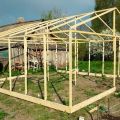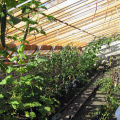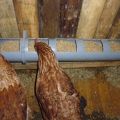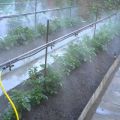How to make a greenhouse (greenhouse) for tomatoes with your own hands
Greenhouses are widely used for growing various crops. In such structures, plants are protected from dust, precipitation and a sharp drop in temperature. As a result, this allows you to significantly increase the yield and quality of plantings. A do-it-yourself greenhouse for tomatoes is the best solution to this issue. Of course, if you wish, you can buy ready-made structures on the market, which are presented in a wide range.
What requirements should a greenhouse meet
Regardless of whether the finished structure will be installed or built by hand, it must meet certain requirements:
- The greenhouse for tomatoes should be warm. This will allow the earth to quickly warm up under the influence of sunlight.
- The structure should be of sufficient size for easy planting and harvesting.
- To prevent the structure from touching the ground, it is better to install it on a foundation. This will avoid corrosion and decay of the greenhouse elements.
- Since classic greenhouses do not have doors, it is necessary to construct a removable top.
- The height may be slightly more than 1 m. As for the other sizes, it all depends on the preferences and capabilities of the owner, as well as the characteristics of the culture grown.
A homemade greenhouse is often a metal or wooden frame, which is finished with foil, glass, polycarbonate and other materials.
How to make a greenhouse for a tomato
It is quite simple to build a greenhouse or a greenhouse for tomatoes in a summer cottage. There is no need for large financial costs. Of course, large-scale structures are an exception. In such cases, it is better to use the services of professionals who will solve any problem with high quality and in a short time.

The greenhouse is based on a frame that has any shape. It can be triangular, arcuate, or rectangular. For the construction of the base, a wooden beam, metal corners, fittings, pipes and other materials that have sufficient operational properties are used.
Frame structures
Classic greenhouses are made from the same frames. Their dimensions depend on the dimensions of the future greenhouse. Frames are made of wooden blocks or metal corners. Greenhouse construction is carried out in several stages:
- A brick foundation is laid along the perimeter of the future building. This will give the greenhouse stability and protect it from contact with the ground.
- Beams and boards are treated with mastic, which will protect the wood from negative environmental factors.
- A timber is applied to the finished foundation around the perimeter. With the help of self-tapping screws, prepared boards are attached to it.
- Boards are attached to the racks from above. After this, the construction of the rafter system is carried out. This implementation will simplify the drainage of condensate.

At the final stage, the frames are attached to the frame. One of them should open, which will allow you to get inside the building.
Metal buildings
Greenhouses made of metal have a presentable look. For the construction of the frame, a steel corner or pipes of a certain diameter are used. The assembly is carried out by welded or prefabricated method. This determines whether the building will be temporary or permanent. A dense film or polycarbonate is used as a coating. Metal greenhouses are ideal for growing seedlings as well as adult plants.
Metal buildings have different shapes. Arched designs are very popular. But, nevertheless, rectangular greenhouses are considered more comfortable. Each meter of land can be used as efficiently as possible.
Greenhouse-bread bin: design features
Greenhouses are presented on the market in a wide range. Small designs in the form of a breadbox are very popular.
They have many benefits. Caring for plants in such buildings is very easy. This is due to the fact that the built greenhouse is equipped with drop-down walls.
Product advantages and disadvantages
The advantages of a greenhouse in the form of a bread bin include:
- compactness, which allows you to install the structure anywhere on the site;
- light weight allows you to easily rearrange the greenhouse, if the need arises;
- despite its small size, many seedlings can be placed in such a greenhouse;
- the presence of rising flaps makes it easier to care for plants;
- ease of installation;
- relatively low cost.
As for the disadvantages of a greenhouse-bread bin, here they are distinguished:
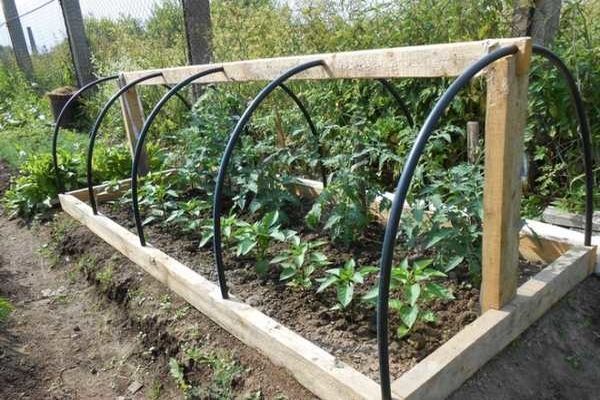
- tall plants cannot be grown in such a structure;
- the hinges that ensure the sash travel are periodically lubricated;
- the installation of a bulky structure cannot be carried out independently.
It is worth noting that the height of the greenhouse for tomatoes is no more than 1.5 m. Higher buildings are referred to as greenhouses. As for the bread bin, it is optimal for growing tomato seedlings and other crops.
Classic arched greenhouse
Arched greenhouses have been used to grow various crops for a long time. Their popularity lies in the presence of many advantages, among which are:
- ease of construction;
- minimum cash costs;
- versatility and practicality.
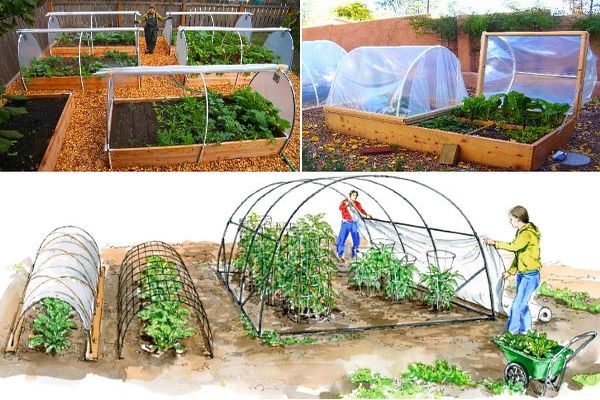
You can easily build an arched structure with your own hands. In this case, it is worth considering some features:
- The structure should be erected so that the end face faces north. Thus, the plants will be illuminated throughout the day. And in the midday heat, they will be hidden behind the end wall.
- During construction, it is worth considering the width and height of the steam room, which will allow you to choose the right length of materials.
- The length of the steam room can be any, but given its low height, you should not make it more than 4 m.
- The arcs should be no more than a meter apart. This is done in order to give the structure strength.
By observing these rules, you can create a strong and durable greenhouse that is suitable for growing not only tomatoes, but also other vegetables.
Greenhouse construction
The construction of a greenhouse at a summer cottage begins with a foundation device. The best option here would be a wooden board or timber.Before use, the material is treated with an antiseptic, which will protect it from decay. Shields are made of boards, which are knitted into a box. Its size should correspond to the size of the greenhouse. Self-tapping screws, corners and nails are used for fastening.
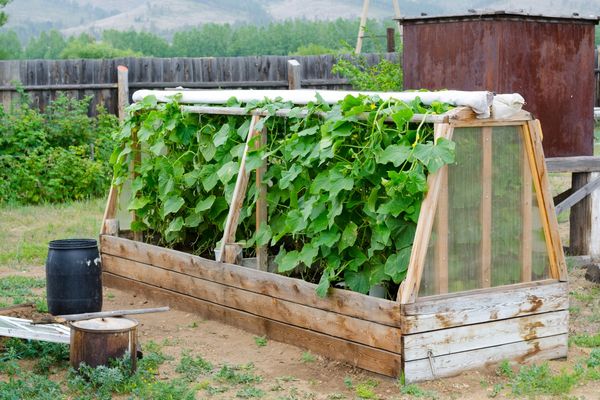
Today greenhouses made of PVC pipes are very popular. After the box is built, they begin to install the fittings, on which pipes will be put on in the future. The armature sticks tightly into the ground. The rods should be located opposite each other. To make the process easier, you need to make marks on the box.
The next step is the installation of pipes. They are carefully pushed onto the reinforcement, after which they are attached to the base with plates. At the final stage, the frame is covered with a film. It is carefully attached to the box with a construction stapler.
Thus, the construction of the simplest arched greenhouse for tomatoes with their own hands is being carried out. Depending on the height, different varieties of tomatoes can be grown in it.


